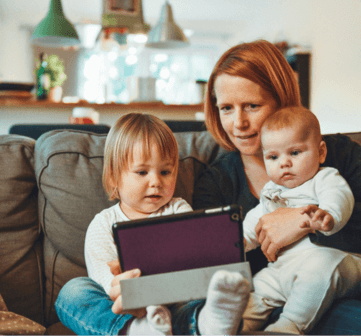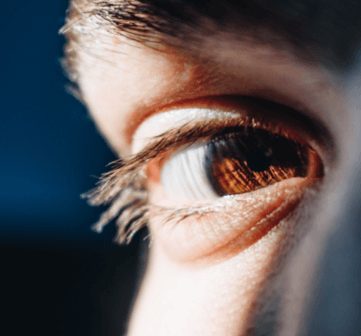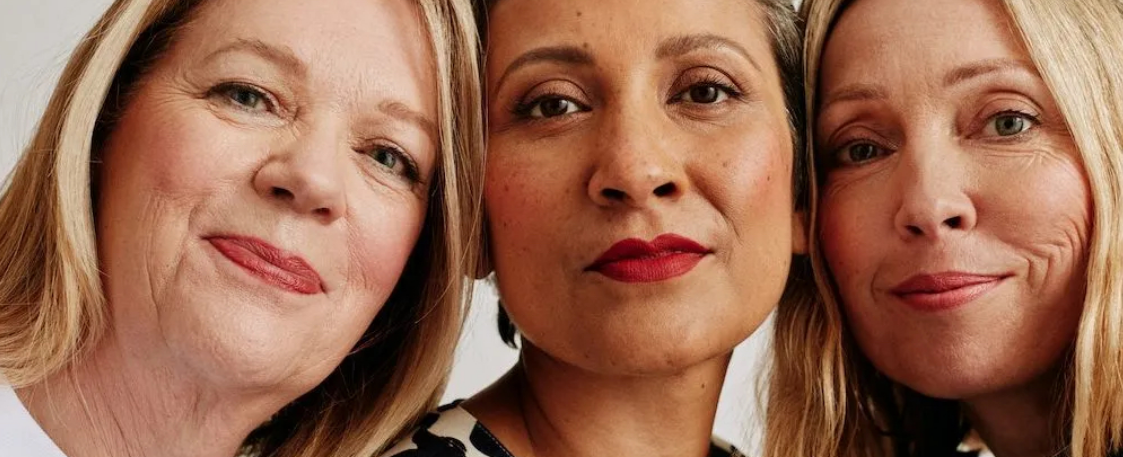
Coming of Age: How Brands Can Champion the Super Consumer
Who among us could forget the 2023 Sports Illustrated Swimsuit Issue featuring none other than Martha Stewart on the cover? At 81, she’s the oldest person to nab the feature slot for that publication.1. And damn, did she look good doing it.
Martha Stewart’s smiling, cheeky visage on the cover of one of the world’s sexiest magazines is just one stone on the longer path towards embracing—and even celebrating—the act of aging.
But our collective shook-ness at the audacity of Martha Stewart to pose in a bathing suit also highlights a significant gap in representation, both in media and advertising: that of the aging woman.
Where society has succumbed to this taboo as an inalienable belief, brands can rise above and actively counteract it. For their sake (and everyone else’s), they should. Here, we’re sharing the latest trends and consumer insights surrounding this unique, highly valuable demographic: how they’re reclaiming control of what aging represents and how the brands they rely on can better support that journey.
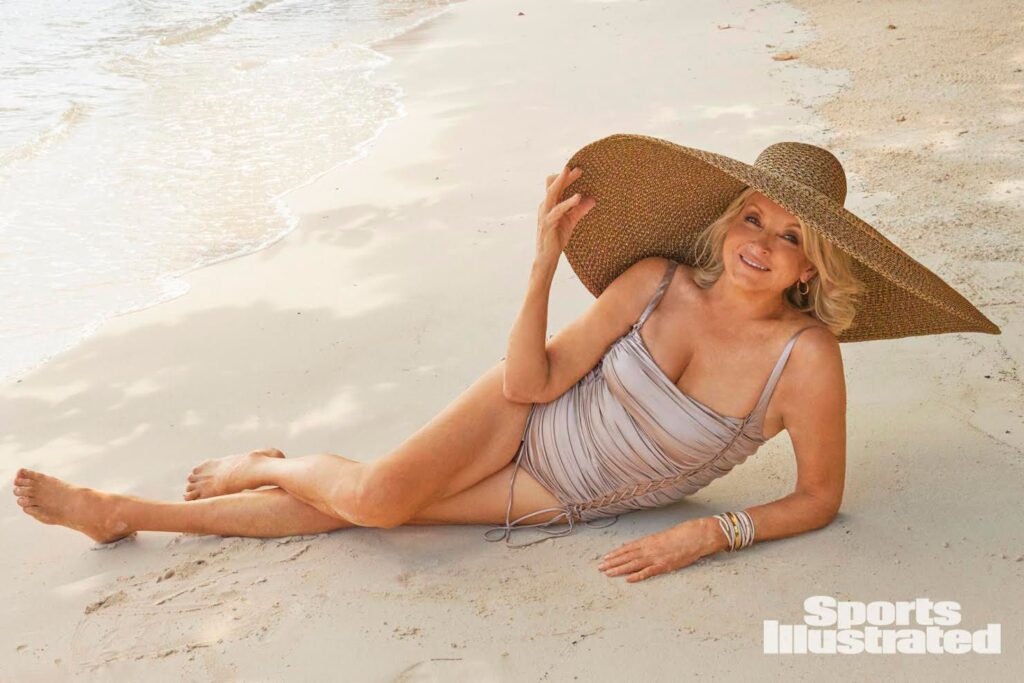
Ageism in Media and Advertising: How Representations of Aging (or Lack Thereof) Inform the Narrative
Through our work with various clients across the wellness industry, we’ve discovered that the “aging market” (women from their late reproductive years through postmenopause) is largely untapped, mainly because it is shockingly underrepresented.
People over 50 make up about a third of the US population.2. In 2020, one in six people was 65 and over.3 However, according to research conducted by AARP in 2019, the 50+ demographic appears in only 15% of media images.4
To put this in perspective, women over the age of 35 make up 60% of the facial skincare market.5 And yet, these women do not see themselves regularly portrayed in skincare advertisements. (Let us not forget one very famous example of this, when Isabella Rossellini’s 14-year run with cosmetic giant Lancôme was ended when she hit 42.6 )
And the images women in this phase of life do see? Well, they aren’t making them feel so hot. AARP’s research found that many photos of older women portray them as feeble, homebound, in need of assistance from a medical professional or younger family member, and technologically inept.7 A survey of British women found that 44% of women 50+ felt patronized by advertisements showing women in their age group.8
But don’t despair! It’s not all bad news.
Brands Getting With the Day and Age
In 2018, model and actress Andie MacDowell made her triumphant return, walking in a L’Oréal Paris show after a lengthy break from the runway.9 At 60, MacDowell had served as a L’Oréal Brand Ambassador and the brand’s “face” for more than 30 years, and still going strong. “With L’Oréal,” she told Vogue, “I’ve really been able to [spread the message] that there’s no time limit on beauty.”
And the movement didn’t stop with Andie. Earlier this year, Monica Lewinsky, White House intern-turned-activist, writer, and producer, added “model” to her résumé at 50.10 Partnering with fashion brand Reformation, Monica seized the opportunity as a platform to remind women to vote. But, she admitted to The New York Times, vanity was a factor as well—the campaign allowed her to gain “street cred with a new generation.”
By partnering with icons like MacDowell and Lewinsky, brands are quickly seeing the power of tapping into these wiser women’s life experience as well as providing representation to a market that’s been deprived of it (Lewinsky’s campaign generated more than $2 million in media exposure in the first 48 hours11 ).
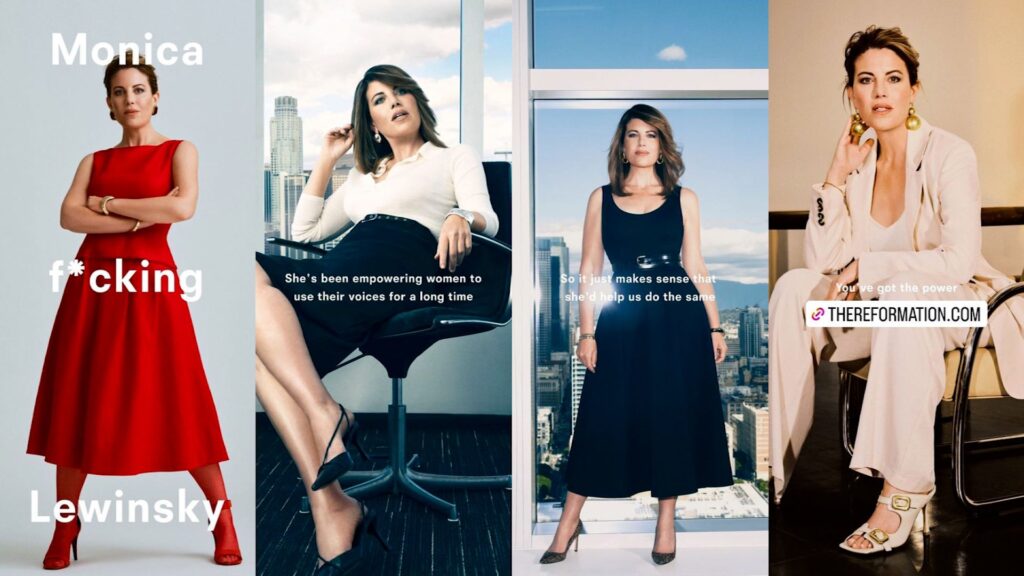
It’s Time for a Shift in Perspective
Thankfully, as evidenced above, the female wellness industry is already moving toward a more open, straightforward dialogue about the aging process. Brands like L’Oréal, Reformation, and more are embracing aging as evolution, not an endpoint. If you’re a women’s wellness brand, you can support consumers as they reshape the conversation around aging and give them what they want the most: to be seen.
And why wouldn’t brands want to capitalize on this massive market segment with serious purchasing power? Forbes calls women 50+ “super consumers” because they’re the “healthiest, wealthiest, and most active generation in history.”12 They account for 27% of all consumer spending and make 95% of household purchasing choices. Plus, the majority is willing to pay a premium for quality and convenience—the dream for consumer brands with high standards.
While strides have been made towards this revelation, there’s still work to be done. These prevailing sentiments have been carefully built over a century, and won’t come toppling down without some serious disruption. So, which Jenga block should we pull out next?
“Anti-Aging” is Over (and We’re All Better Off For It)
Consumers in this older demo yearn to be seen, to be taken seriously, and to be considered meaningful, contributing members of their community.13 But their lives as consumers have been dominated by messaging that your life suddenly, tragically ends as soon as you blow out your 50th birthday candles,14 especially by the brands they rely on the most.
The skincare industry set the tone for "anti-aging" in the early 20th century. Product lines by cosmetic giants15 Helena Rubenstein (acquired by Colgate, then later by L'Oréal16 ) and Elizabeth Arden (later acquired by Revlon)17 encouraged women to chase the youth they once had and hide any signs of age. Early Gen X and Baby Boomers grew up understanding that their lives as meaningful, beautiful, and attractive members of society ended in middle age.
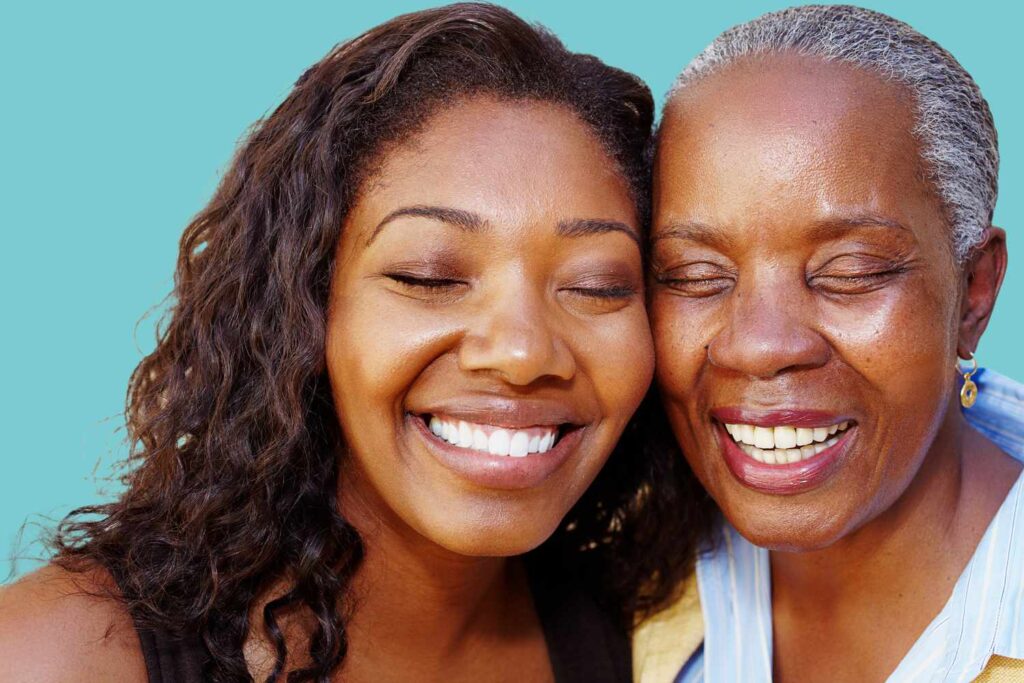
The Shift to “Anti-Anti-Aging” (and Aging Well)
The narrative started changing in 2010 when a fresh wave of competitors entered the market—specifically, new skincare lines with an eye on younger audiences.18 Brands like Glossier, Drunk Elephant, and The Ordinary use holistic language to discuss the benefits of their products, like “even skin tone,” “radiance,” and “hydration.”
This sea change kicked into high gear in 2017 when Allure Magazine announced they would phase out the term “anti-aging” from their publication.19
Even if the ingredients among skincare lines are the same, with the same intended outcomes (reduce dryness and lessen fine lines and wrinkles), brands like Glossier have taught their audiences (now in their 30s and 40s) a new way to perceive their aging process: gentler, clinical without feeling sterile, and evergreen
In other words, it’s about getting your best skin now, not the skin you had 20 years ago.
Healthy is the New Youthful
Instead of focusing on the aspirations of youth, older feminine consumers are setting their sights on health and longevity. They understand that no one can stop the aging process. However, aging doesn’t mean they can’t feel and look their best.
In our consumer research, we heard older women talk about embracing the aging process, coming into their confidence, and finding ways to complement their changing bodies with clothing, skincare routines, and products that still align with their sense of style.
These “super consumers” also expressed pride in having accumulated years of wisdom, seeing it as a source of honor rather than shame. For them, aging—living a long, full, vibrant life—is a victory.
These women are ready to have a new conversation about their golden years. It’s the job of wellness brands to open that line of dialogue and meet them where they are.
Taking the Dialogue About Women’s Wellness to a New Level
The ways in which we talk about women’s health and wellness have changed so much, yet certain stigmas still linger. It’s shocking to realize how little we understand about women’s bodies as they age. The knowledge gap is wide—for those on the advertising side working to curate products for this target audience, for medical professionals trying to support aging women, and for women themselves.
At the 2023 Arab Health Conference, business consultant firm Frost & Sullivan presented a list of growth opportunities for the “FemTech” industry, as they call it, over the next five or so years.
These are the two we’re watching most closely: 20
- Longevity solutions – CDC data from 2021 shows that women live, on average, five years longer than men,21 giving wellness industries from cosmetics to health a net new demographic to target.
- Sexual solutions – Societal norms tell us to feel icky about older people having sex. This means it’s open season for brands willing to fill in the gap and provide products that support (dare we say, celebrate? *gasp*) older women’s sex lives.
The ‘M’ Word
By 2025, 12% of the global population will be going through menopause. 85% will experience some kind of symptoms. And while every person born biologically female goes through menopause in one form or another, scientists, doctors, and advertisers know almost nothing about it.
The latest generation to enter this life phase isn’t accepting this knowledge gap as “just how it goes.” They’re demanding a clear, informative conversation about what’s happening to their bodies. No platitudes. No fluff. Just facts and solutions that work.
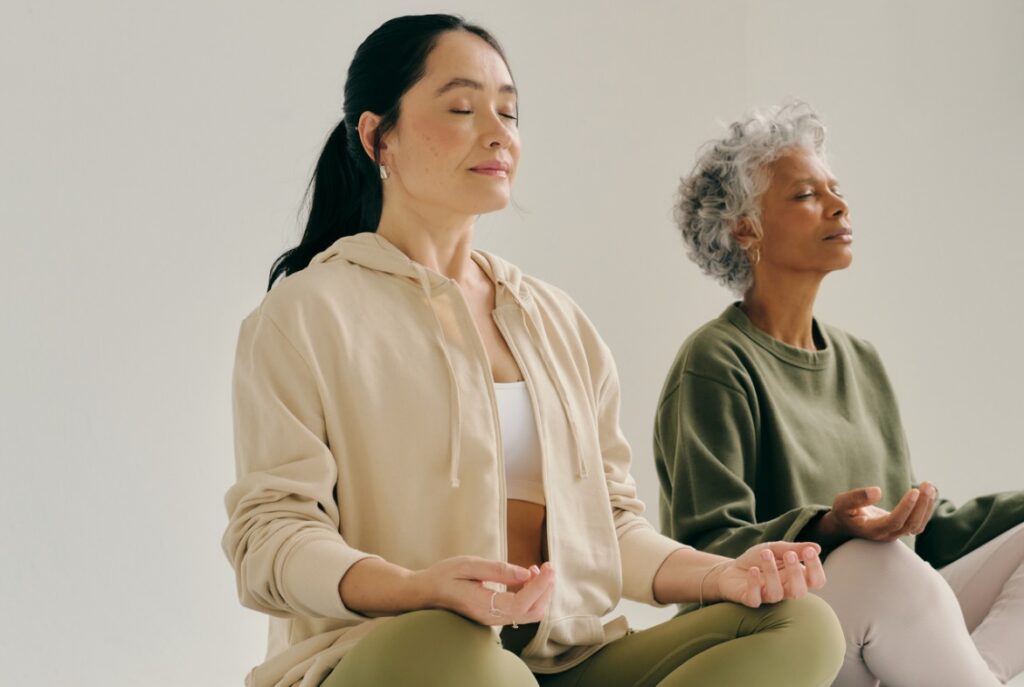
Transforming the Female Wellness Category Starts With a New Story
Wellness brands have the opportunity to provide services and products that empower older women to continue living their best lives. To see, hear, and celebrate these women for how far they’ve come and the possibilities still before them. To embrace their storied life experience and wear it as a badge of honor.
As experienced brand storytellers, we shape a brand’s narrative to move people. To act. To change their perspective. To stand firm in their worth. And to push past the discomfort of stigma to the other side, where acceptance and potential await.
If you’re looking to lead the way in the female wellness category, it’s time to throw out what you thought you knew about aging women and start anew from a place of empathy and possibility. Only then can real stories reach real people. That’s what we’re here to champion.
Sources:
- BBC. “Martha Stewart, 81, becomes oldest Sports Illustrated swimsuit cover star.” https://www.bbc.com/news/world-us-canada-65608913
- NYTimes. “Older People Are Ignored and Distorted in Ageist Marketing, Report Finds.” https://www.nytimes.com/2019/09/23/business/ageism-advertising-aarp.html
- United States Census Bureau. “2020 Census: 1 in 6 People in the United States Were 65 and Over.” https://www.census.gov/library/stories/2023/05/2020-census-united-states-older-population-grew.html
- AARP. “Do Images of Older Americans Reinforce Stereotypes?” https://www.aarp.org/research/topics/life/info-2019/age-representation-in-online-media-images.html
- Beauty Independent. “Beauty Brands Are Using The Term “Pro-Aging,” But Is The Industry Making Strides Against Ageism?” https://www.beautyindependent.com/beauty-brands-using-term-pro-aging-industry-making-strides-ageism/
- Harpers Bazaar. “Isabella Rossellini on aging, beauty and her return to Lancôme.” https://www.harpersbazaar.com/uk/beauty/skincare/a18672934/isabella-rossellini-on-aging-beauty-and-her-return-to-lancome/
- NYTimes. “Older People Are Ignored and Distorted in Ageist Marketing, Report Finds.” https://www.nytimes.com/2019/09/23/business/ageism-advertising-aarp.html
- The Drum. “Ageism in ads – why are brands still failing to properly represent older women?” https://www.thedrum.com/news/2021/12/10/ageism-ads-why-are-brands-still-failing-properly-represent-older-women
- Vogue. At 60, Andie MacDowell Returns to the Paris Runway—And Proves There’s No Time Limit on Beauty. https://www.vogue.com/article/loreal-le-defile-spring-2019-fashion-show-paris-river-seine-andie-macdowell-aging-gracefully-60
- New York Times. Monica Lewinsky’s Reinvention as a Model. https://www.nytimes.com/2024/03/01/style/monica-lewinsky-model-reformation.html
- BBC. Monica Lewinsky x Reformation and the power of unorthodox celebrity collabs. https://www.bbc.com/worklife/article/20240314-monica-lewinsky-reformation-campaign-unexpected-celebrity-collaborations
- AARP. “Why marketers should be scared of ignoring 50-plus women.” https://advertise.aarp.org/50-insights/ignoring-50-plus-women
- National Library of Medicine. “Body Image, Aging, and Identity in Women Over 50: The Gender and Body Image (GABI) Study.” https://www.ncbi.nlm.nih.gov/pmc/articles/PMC5215963/
- NYTimes. “Older People Are Ignored and Distorted in Ageist Marketing, Report Finds.” https://www.nytimes.com/2019/09/23/business/ageism-advertising-aarp.html
- Vox. “The fall of “anti-aging” skin care.” https://www.vox.com/the-goods/2018/9/11/17840984/skin-care-anti-aging-drunk-elephant
- L’Oreal. “Helena Rubinstein, a champion of the beauty industry.” https://www.loreal.com/en/articles/brands/hr/
- Vox. “The fall of “anti-aging” skin care.” https://www.vox.com/the-goods/2018/9/11/17840984/skin-care-anti-aging-drunk-elephant
- Vox. “The fall of “anti-aging” skin care.” https://www.vox.com/the-goods/2018/9/11/17840984/skin-care-anti-aging-drunk-elephant
- Allure. “Allure Magazine Will No Longer Use the Term ‘Anti-Aging’" https://www.allure.com/story/allure-magazine-phasing-out-the-word-anti-aging
- Frost & Sullivan. “Women’s Evolving Healthcare Issues Require Change in Mindset as well as Holistic and Personalized Care Delivery Models.” https://www.frost.com/news/press-releases/reimagining-womens-health/
- USA Facts. “Do women live longer than men?” https://usafacts.org/articles/do-women-live-longer-than-men-in-the-us/
- Forbes. “Menopause Unveils Itself as the Next Big Opportunity in FemTech.” https://www.forbes.com/sites/reenitadas/2019/07/24/menopause-unveils-itself-as-the-next-big-opportunity-in-femtech/
- NYTimes. “Women Have Been Misled About Menopause.” https://www.nytimes.com/2023/02/01/magazine/menopause-hot-flashes-hormone-therapy.html

